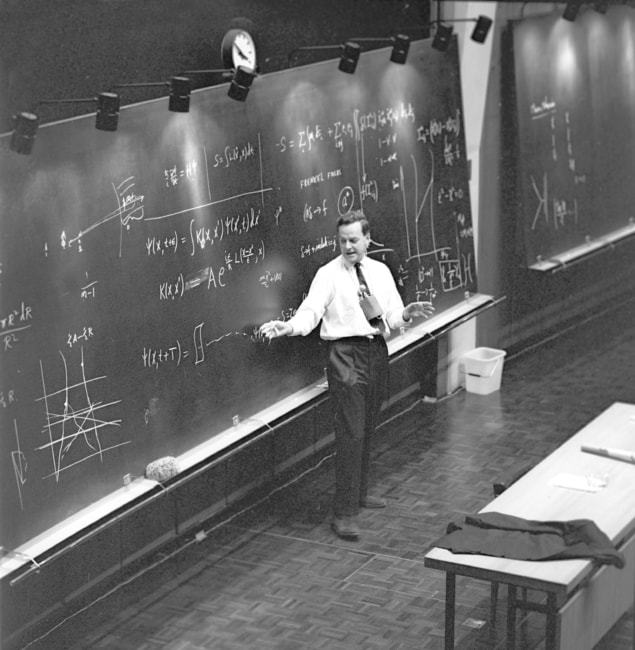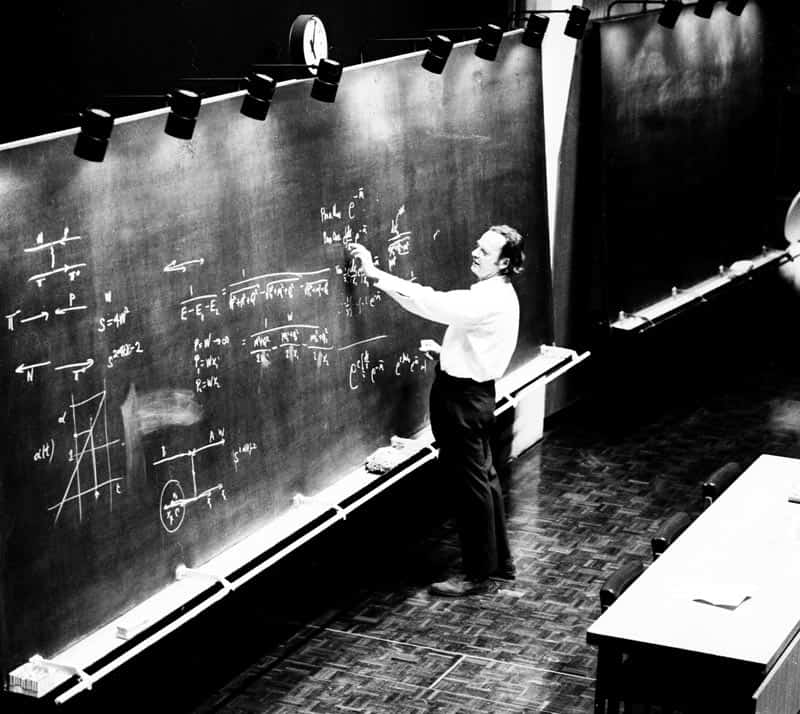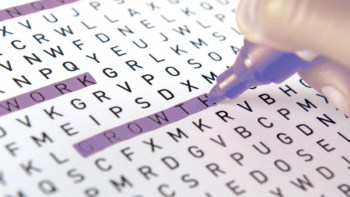Robert P Crease reports from the APS April meeting, where Virginia Trimble revealed her favourite Richard Feynman stories

If anyone has still-unheard stories to tell about Richard Feynman, the centenary of whose birth occurs next month, it’s the astronomer Virginia Trimble of the University of California, Irvine. That, plus the enduring fascination of Feynman himself, was among several reasons that a session on “The legacy of Richard Feynman” packed a ballroom on Monday at the April meeting of the American Physical Society (APS) in Columbus, Ohio. That day the city was treated to a rare April snowstorm, and I’m yearning to write that I braved a blizzard. But as the city’s convention centre was attached to the hotel I didn’t have to leave the building, so like most everyone else saw the snow comfortably from within.
Before Trimble took to the stage, we first heard from Paul Halpern from the University of the Sciences in Philadelphia, who treated the close relationship between Feynman and John Wheeler – Feynman’s doctoral advisor, friend, mentor, colleague and collaborator. Halpern, author of the recent book The Quantum Labyrinth: How Richard Feynman and John Wheeler Revolutionized Time and Reality, noted uncanny parallels between Feynman and Wheeler’s life and work: each thought the best way to learn a subject was to teach it, liked to think by visualizing, and valued mining truth from “crazy ideas.”
Halpern was followed by John Preskill, the Richard P Feynman Professor of Theoretical Physics at Caltech, where Feynman taught. Preskill’s talk, “Feynman After 40″, focused on the physicist’s later contributions, including the Feynman Lectures on Physics and the famous “Physics X” class for undergraduates, a non-credit, informal, weekly course in which Feynman insisted that “Questions had to be about trying to understand something.”.
Preskill also discussed an underappreciated talk of Feynman’s 1982 called “Simulating physics with computers”, which inspired the field of quantum computing. Preskill said it was as prescient as Feynman’s more famous talk laying the groundwork for nanotechnology. He also discussed Feynman’s ruminations on the foundations of physics, which I thought illustrated yet again that physicists who disdain philosophy are condemned to engage in it – amateurishly. Maybe I’m still steaming about the time Feynman threw me out of his office for mentioning the topic. And according to Halpern, the text on Feynman’s final blackboard stated: “What I cannot create, I do not understand. Know how to solve every problem that has been solved.”
And so to Trimble, the final speaker. She is a blunt, witty and flamboyant figure in the astronomy community – and did not disappoint. The abstract she had submitted to the APS contained the sentence, “If I am remembered on my 100th birthday, it will be for the Life magazine article, my year as Miss Twilight Zone, and because I modelled naked for Richard Feynman when he was learning to draw.”
“If I am remembered on my 100th birthday, it will be for the Life magazine article, my year as Miss Twilight Zone, and because I modelled naked for Richard Feynman when he was learning to draw.”
Virginia Trimble
To Trimble’s consternation, the APS eliminated the adjective in the final clause of that sentence. But Trimble is not one to let others mute her voice. She began by telling the audience that she had complied a list of her favourite Feynman stories, labelling them A, B, C and so on, but stopped when she ran out of letters. She started through the list, with RPF [Richard Phillips Feynman] Story “C” about how she had posed for Feynman naked when he was learning to draw while she was a graduate student at Caltech (1964–1968) – and briefly showed a photo confirming that fact. “People say that Feynman didn’t know how to listen,” she said. “It’s not true. He just didn’t like silence. He’d talk if you didn’t. He talked constantly while he was drawing.”
Most – but not all – of the stories were about Trimble. Some involved things Feynman did for students or for colleagues at special events. Other stories were about Trimble seeing Feynman in action in different circumstances: helping children with homework, the day the Nobel prize was announced, his taste in leisure reading, pieces of chalk in the lecture rooms, suggestions for experiments that he made to scientists, and so on.

A scientist, not a cartoon
RPF Story “X” took place in 1972 when Trimble met – and wed – the gravitational-wave physicist Joseph Weber. According to Trimble, Feynman told her that married women should not change their names. “But he made an exception for his own wives.”
RPF Story “Y” had to do with the times she co-taught Physics X classes with Feynman.
When Trimble finally reached RPF Story Z, she stopped and apologized: “I’ve got more stories, but….”
Members of the audience will no doubt have wished there were more letters in the alphabet.



